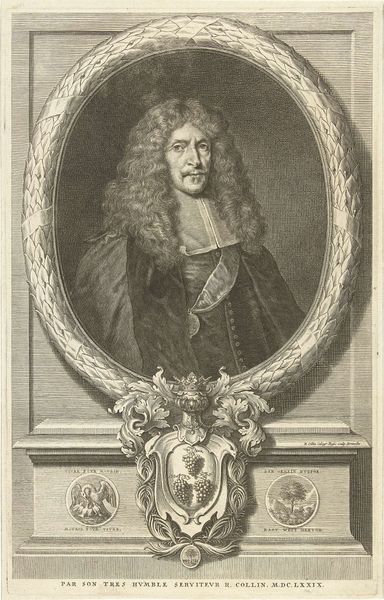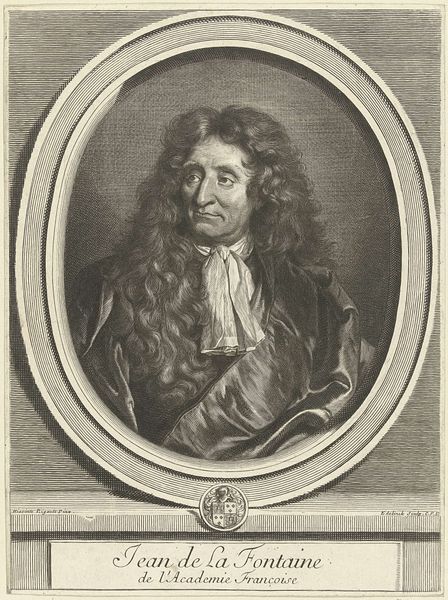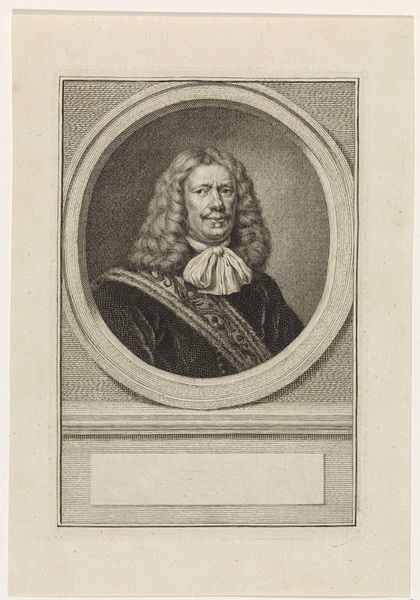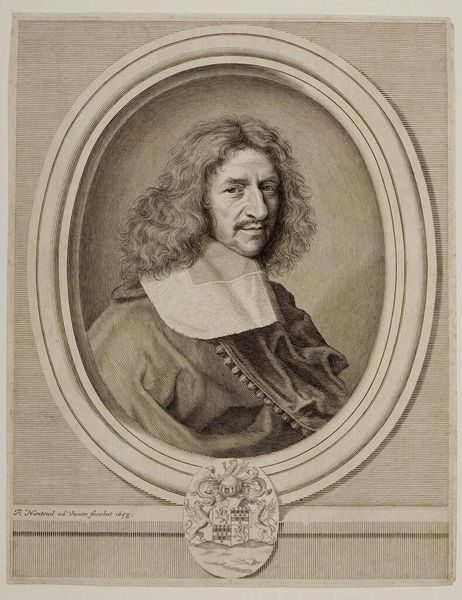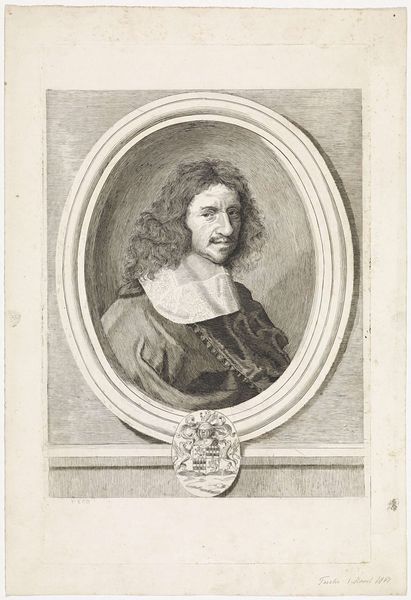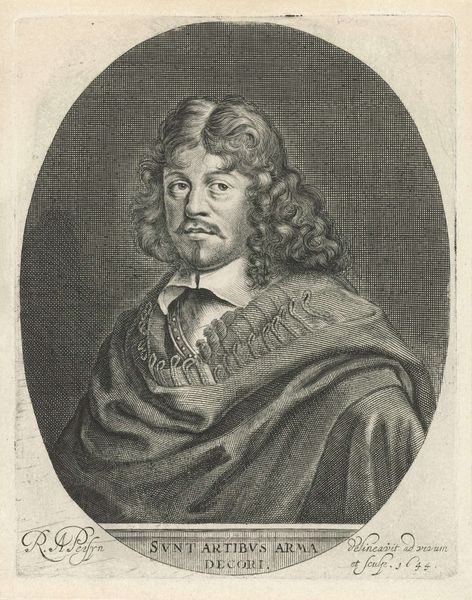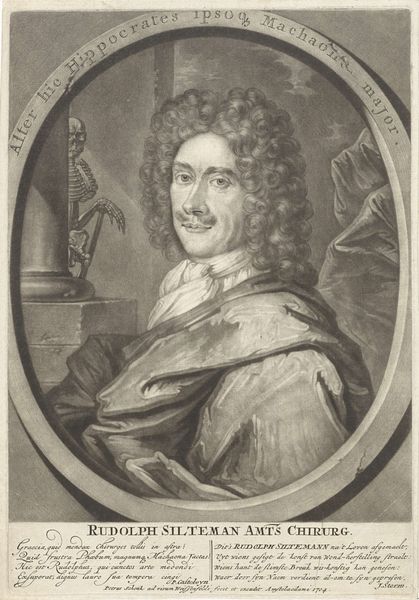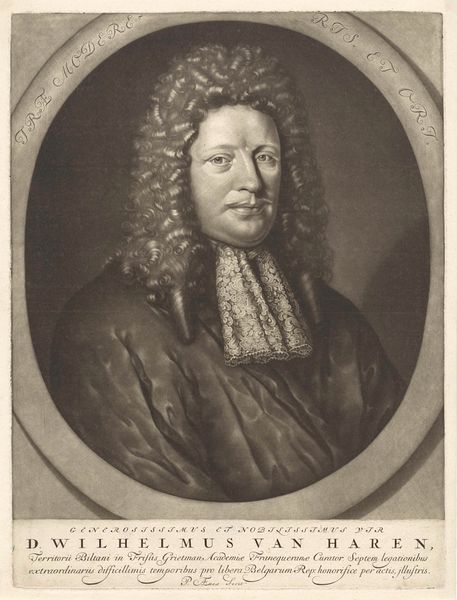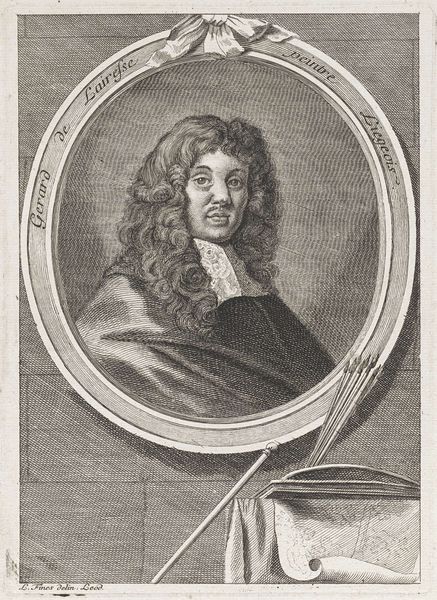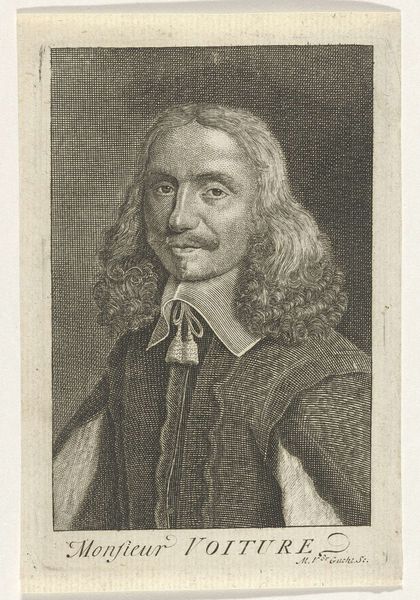
print, engraving
#
portrait
#
baroque
#
dutch-golden-age
# print
#
old engraving style
#
figuration
#
personal sketchbook
#
line
#
engraving
Dimensions: height 190 mm, width 128 mm
Copyright: Rijks Museum: Open Domain
Curator: Welcome. Today we’ll be looking at an engraving titled "Portret van Simon Peter Tilemann," created in 1668 by Christiaan Hagen. It’s currently housed in the Rijksmuseum. Editor: My initial reaction is of somber formality. The gentleman’s gaze, combined with the oval frame, speaks of tradition, of a man presented for posterity. Curator: Indeed. Let's delve deeper into that formality. What this portrait tells us, from a social-historical viewpoint, concerns the increasing power and influence of certain classes within the Dutch Golden Age. The way imagery could communicate political ideology through posture and class, and who had the opportunity to create images and narratives around these people, shows a marked shift of the social hierarchy. Editor: Right, but I'm curious about what his features communicate. His strong nose, almost severe expression, along with the cascade of styled curls—there’s an interesting tension between rigidity and ornamentation. And is this truly representational of what Peter Tilemann looked like, or of an ideology his representation was expected to follow? Was the narrative his own or his engravist's to weave, based on his social and personal views? Curator: An excellent question, and it's important to remember how engravings operated as instruments of social memory. How did this visual rhetoric impact the societal perception and construction of not just Peter Tilemann’s identity but others’ that came after him as well? Editor: The poem below the image offers further clues. “This was Tilman’s face, it stands, and lives on in the lineage, God's fear and honour alone, further he did not consider.” This emphasizes specific moral virtues – piety and honor – framing his legacy. This controlled, public face versus a messy portrait is not something often seen at the time, making it a potential nod to his possible public religious life. Curator: Exactly! The inscription adds a layer of societal expectation onto Tilemann, creating a potent visual statement about not just individual character, but community values, religious beliefs and, more critically, access. It speaks to the careful construction of identity within a very specific time. Editor: Looking at it that way changes the whole picture for me. It becomes not just a face, but a deliberate socio-political and possibly religious declaration of values and purpose. Curator: I agree. By viewing the portrait through that critical intersectional lens, we move past a simple depiction and move towards a deeper, historically enriched consideration of identity and social expectations during that period.
Comments
No comments
Be the first to comment and join the conversation on the ultimate creative platform.
